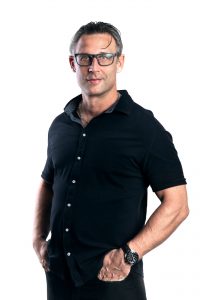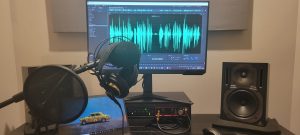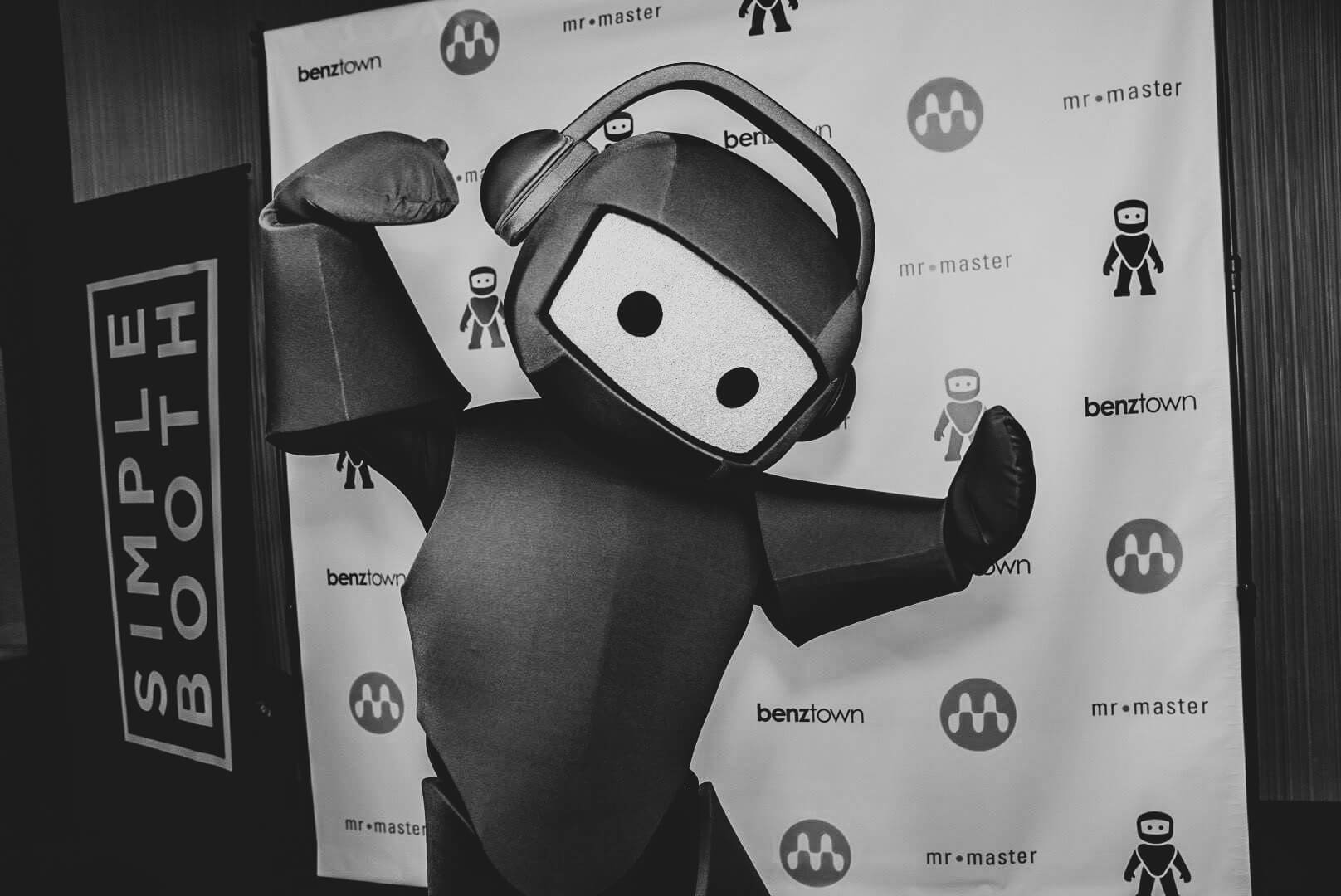Behind the Mic: Andre Schikolenko

Hi, I’m Andre Schikolenko, a voice artist with over a decade of experience in radio and voiceovers. I specialize in creating captivating audio content with a personable, authentic, and approachable voice. While I’m new to radio imaging, my years in radio and commercial work equip me to deliver high-quality, engaging sound. I’m excited to bring fresh energy and creativity to radio stations looking for a
dynamic voice.
What radio VO work have you done in the past (stations/markets)?
I have over 10 years of experience in radio, working with stations like Y108, Dave FM, Mix 99.9, Rock95, and The Bear in various markets across Ontario, Toronto, Ottawa, and beyond. While my primary roles were as an on-air personality, I also contributed to voiceovers for commercials, promotions, and station imaging. Although I’m still breaking into dedicated radio imaging, my extensive radio background, along with my voiceover work in commercials, has given me the skills to deliver engaging, professional sound for any market.
What are you up to presently (freelance/on-staff at a station)?
Currently, I’m working as a freelance voice artist, providing voiceover services across various industries. I operate from my fully equipped home studio, offering everything from commercial voiceovers to narrations and explainer videos. While I’m not on staff at a station right now, I’m actively pursuing radio imaging opportunities to bring my experience and versatile voice to new markets.
Check out Andre’s demos!
What do you love about your job?
What I love most about my job is the power of transformation. With just my voice, I can turn words into worlds. One moment, I’m guiding a listener through a complex company explainer video, and the next, I’m narrating a heartfelt story that connects with people on a personal level. It’s like having a superpower—you get to make people feel, imagine, and engage with just a few well-placed words and the right tone. Every day is a new creative challenge, and the best part is knowing that I’m helping bring brands, stories, and ideas to life, one voiceover at a time.
How did you get started as a VO actor?
My journey into voiceover work started organically from my radio career. As an on-air personality, I was often called upon to do voiceovers for commercials and station promos. I quickly realized how much I enjoyed the creative challenge of bringing scripts to life. It was fascinating how I could shape a message just by changing my tone or delivery. Over time, I started honing my skills outside of radio, exploring different voiceover opportunities in commercials, narrations, and corporate projects. Transitioning into full-time VO work felt like a natural progression—taking my passion for voice, my years of radio experience, and combining them to help brands connect with audiences on a more personal and engaging level. I’ve always believed in the power of the spoken word, and becoming a VO actor allows me to bring that power to more industries and creative projects.
What was your first gig? Any memorable ones since then?
My first voiceover gig was actually a commercial for a local hardware store when I was still on the air at Y108. I remember being handed the script and thinking, ‘This will be easy.’ But as soon as I stepped into the booth, I realized there was more to it than just reading the words— I had to bring them to life. That moment sparked my love for VO work, and it’s stuck with me ever since. One of my most memorable gigs, though, was narrating an internal promo for a health tech startup. They wanted something bold, yet personal, and when the CEO called me afterward to say my voice gave their brand a heartbeat, I knew I had made an impact. Moments like that are why I love what I do.
Who are your VO idols/mentors?
Growing up in Toronto, I was inspired by some of the greats in radio and voiceover. People like John Derringer, who ruled the Toronto airwaves with his iconic voice on Q107, always stood out to me for his authenticity and wit. But it was talents like Rick Moranis and Catherine O’Hara, who both started on radio and went on to make it big internationally, that really showed me the power of voice to cross boundaries and connect with audiences everywhere. In the VO world, I’ve always admired David Kaye, the voice of Optimus Prime, and Eric Bauza, who grew up in Scarborough and became the voice of legendary characters like Bugs Bunny and Daffy Duck. They’ve proven that with enough dedication and creativity, a voice can truly transcend borders. I look up to these pioneers for the way they’ve pushed the limits of what voice acting can do.
If you weren’t doing voiceover, what else do you think you’d be doing for a career?
If I weren’t doing voiceover, I think I’d be a chef—or at least give it a shot! I love the creativity and precision involved in cooking. It’s similar to voiceover in that you take different elements and blend them together to create something that resonates with people. Whether I’m grilling a perfect steak or whipping up a classic comfort dish, it’s all about balancing flavors, just like balancing tones in a script. In another life, I’d probably be running a small, cozy restaurant, creating memorable dishes that tell a story on the plate. It’s still storytelling, just in a different medium!
What did it feel like the first time you heard your voice on the radio/television?
The first time I heard my voice on the radio as a radio personality, it was a surreal experience. There’s something about hearing yourself live on air, knowing that people across the city are tuning in, that really hits you. It was a rush—equal parts excitement and nervousness. I remember thinking, ‘That’s really me out there,’ and feeling a mix of pride and a bit of anxiety, hoping I’d sound engaging and relatable. But once I got past the initial jolt, it felt incredible. Knowing that I was connecting with listeners, making them laugh, or keeping them company during their commute, gave me a deep sense of purpose. From that moment on, I was hooked. Being behind the mic felt like home.
How has new technology changed the way you work?
New technology has made my work much more efficient and flexible. I no longer have to go in person to auditions or studios. Instead, I can record, edit, and upload high-quality audio files from my home studio, then share them instantly with clients around the world. Collaboration is seamless—everything from feedback to revisions can be done virtually. This allows me to meet tight deadlines, work on multiple projects at once, and focus on delivering the best performance without the logistical hurdles of traditional studio setups.
What gear do you use on the road? In your studio?
In my studio, I use a Shure SM7B microphone, which delivers a warm, natural sound, perfect for voiceover work. I pair it with a Joe Meek half-rack channel strip, which may be older technology but still adds a unique depth and richness to my recordings. For my audio interface, I rely on the Focusrite Scarlett 2i2, which provides excellent clarity and low-latency performance. I do all my editing and production in Adobe Audition, a powerful DAW that allows me to fine-tune every detail of the audio before delivering the final product.

Andre’s Studio Setup!
Have you ever had a voice coach? Would you recommend it?
Yes, I’ve worked with Kim Hurdon, a renowned voice coach in the industry. Her guidance helped me fine-tune my delivery and adapt my voice to different styles and projects. I’d absolutely recommend working with a coach, especially if you’re serious about voiceover work. They can provide invaluable feedback and help you reach new levels of performance that you might not achieve on your own. Even experienced voice actors can benefit from coaching to keep their skills sharp.
How do you schedule/prioritize your work? How much time do you spend auditioning for new work?
I’m very strategic about how I schedule and prioritize my work. I break down my day into blocks—time for recording, editing, client communications, and, of course, auditions. Client projects always come first to ensure I meet deadlines, but I make sure to set aside a few hours each week specifically for auditioning for new work. Auditioning is an important part of growing my business, so I treat it as a priority. The amount of time I spend on it varies depending on my workload, but I aim for at least 1-2 hours a day when possible.
How do you market your services to potential clients?
I primarily use LinkedIn to connect with potential clients, where I showcase my work, share relevant industry insights, and engage with professionals in my network. It’s a great platform for building relationships and staying visible to those who might need voiceover services. In addition, I run strategic email campaigns to targeted industries, offering tailored voiceover solutions for their specific needs. These campaigns allow me to reach out directly to potential clients and highlight how my voice can enhance their brand or project.
What is the best voice processing trick or voice-over technique everyone should know?
One of the best voiceover techniques I’ve learned is the ‘smile technique.’ It sounds simple, but smiling while you speak changes the tone of your voice, making it sound warmer and more engaging. It’s especially effective for upbeat or conversational scripts where you need to connect with the audience. As for processing, a subtle trick is using just a touch of compression and EQ to smooth out your voice and enhance its natural richness. But the real magic happens in performance—if you can feel the message you’re delivering, the audience will too.
Do you have a different approach to reading radio imaging copy as opposed to TV/Radio commercial ads?
Absolutely, my approach differs depending on the medium. For radio imaging, the goal is to create a bold, attention-grabbing sound that cuts through the noise, so my delivery is usually more dynamic, punchy, and often faster-paced to match the high energy of the station. It’s all about branding the station’s identity in just a few words. On the other hand, with TV or radio commercials, the focus is more on storytelling and connecting with the audience. I adjust my tone, pace, and emotion depending on the message—whether it’s friendly, persuasive, or emotional. The key is adapting to the context and making sure the voice fits the content’s purpose.
Can you offer 3 helpful tips for newbies trying to make it in the voice-over industry?
Invest in Your Equipment and Sound Quality: Even if you’re just starting, having a decent microphone and a quiet space to record can make a huge difference. Good sound quality will set you apart early on and show that you take the craft seriously.
Practice Different Styles and Tones: Voiceover is all about versatility. Don’t just stick to one type of read. Experiment with different tones, emotions, and speeds so you can adapt to any script that comes your way. Practicing will also help you discover your unique voice.
Network and Market Yourself: Building relationships is key. Use platforms like LinkedIn to connect with industry professionals and showcase your work. Don’t be afraid to reach out via email or social media to potential clients. The more people know about your voice, the more opportunities will come your way.
If you could go back in time and hang out in any decade, which one would you go back to and why?
If I could hop into a time machine, I’d head straight to the 1970s. It was a golden era for music and radio—two of my biggest passions. Imagine being a part of that time when rock was at its peak, disco was taking over, and FM radio was the heartbeat of culture. The personalities were larger than life, and radio DJs had the power to introduce new music to the world. I’d love to be behind the mic back then, connecting with listeners in a time where radio had such a raw, authentic energy. Plus, let’s be honest, I wouldn’t mind rocking some bell-bottoms while spinning vinyl records!
Favorite 2 pizza toppings?
Does my pizza already include pepperoni? Because that’s a must! If so, I’d go with hot peppers for a little kick and sliced tomatoes to keep things fresh. It’s like the perfect balance of spice and tang. Plus, the tomatoes make me feel like I’m being healthy… you know, because it’s technically a vegetable, right?
If you could invite one person to dinner, living or dead, who would it be?
If I could invite one person to dinner, it would be Robin Williams. His genius in storytelling and voice acting was unmatched, and he had the ability to make people laugh, cry, and reflect—all in a single conversation. I’d love to pick his brain about how he approached his characters, how he used his voice to create such diverse personas, and how he connected so deeply with audiences. Plus, I imagine the dinner would be filled with spontaneous impressions, “Nano Nanos” and reminders that “You ain’t never had a friend like me!”
Connect with Andre:
;)